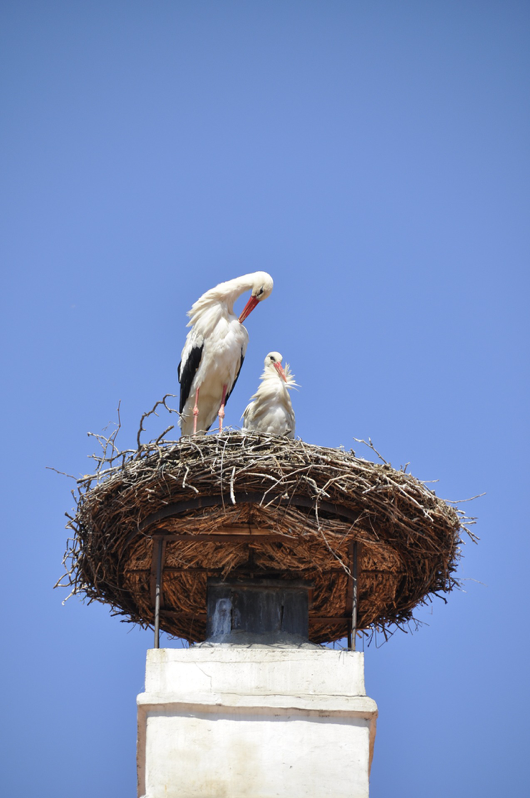When you’ve been in the chimney repair and wildlife removal business for as long as we have, you start to notice that certain misconceptions are pretty prevalent among homeowners. Sometimes, they’re based on outdated information, and other times, they actually have roots in superstition. And while we think that “old wives’ tales” can be fun to read about, what we don’t want is for people to continue believing in myths that can be damaging—or downright dangerous.
Read on to learn four common myths about chimney care and maintenance. You may be surprised by what you don’t know!
“I have a gas fireplace, so there’s no need for me to get the chimney cleaned and/or inspected annually.”

While it’s true that gas fireplaces don’t accumulate creosote the way that wood-burning fireplaces do, that doesn’t mean that inspections are completely unnecessary. When technicians examine gas fireplaces, they look for things like debris buildup, blocked or malfunctioning vents, and deteriorating gas logs. Leaks can also develop in valves and connectors, and those can present a fire or explosion hazard if they aren’t corrected quickly. And finally, if the mortar or crown of the chimney is cracked, moisture can leak into the structure and cause damage.
Gas fireplaces are often advertised as being “clean-burning,” but that simply refers to the fact that gas flames don’t create soot, ash, and other grimy byproducts. It does not mean that they never, ever produce any kind of mess or safety hazard!
“Masonry fireplaces and metal chimney liners last forever, so if I have either one installed, I won’t ever have to worry about repairs or inspections ever again.”
Masonry fireplaces and metal chimney liners will generally last a lifetime with proper care and maintenance. If you neglect routine cleanings, though, their lifespan can be cut down significantly. These structures are typically expensive to install, so protect your investment by having them looked at once a year.
Another thing to remember is that chimneys and fireplaces are not just brick-and-metal tubes attached to brick-and-mortar boxes. A functioning chimney/fireplace combination actually consists of several different structures and mechanisms, and they all need to work in harmony for the chimney to function properly. Your metal flue liner may be in great shape after several years of regular use, but you’re still going to have problems if a gas vent becomes blocked or the damper gets stuck in one position.
“DIY chimney-cleaning guides are easy to find online, so I don’t have to hire a professional sweep.”
About a year ago, we published an entire blog post devoted to debunking this myth. If you missed that entry or need a refresher course, though, here’s why we think that chimney cleaning should be left to the professionals:
- Cleaning chimneys is extremely dirty work; sweeps regularly encounter soot, creosote, and other debris while completing a job. Because that stuff can be noxious if it gets into your lungs or eyes, technicians will usually arm themselves with specialized gear and tools to keep the mess contained and minimize their risk of exposure. The average homeowner doesn’t have access to industry-specific equipment and said equipment can be prohibitively expensive to obtain—especially if you’re only going to use it once a year.
- Professional chimney sweeps can spot seemingly inconsequential issues that amateurs tend to miss or disregard. Minor problems that go unrecognized can turn into major pitfalls, which may necessitate more costly repairs later on down the road. When you hire a chimney sweep, part of what you’re paying for is the sweep’s expertise.
- A reputable chimney cleaning service will be insured, thus protecting you from legal (and financial) liability if your property is damaged or someone is injured during the cleaning process. Because cleaning a chimney is more dangerous than cleaning a kitchen or a bathroom, this is a very, very important factor to take into consideration!
The bottom line? Yes, you can clean your own chimney; doing so isn’t illegal. It’s just really, really not a good idea.
“If you think that there’s an animal in your chimney, you should build a fire and smoke it out!”
If you think that there’s an animal in your chimney, building a fire is one thing you absolutely should not do. Smoke and heat might drive the offending bird or raccoon away…but it could kill the critter instead, and then you’ll have a dead bird or raccoon stuck inside your chimney. That’s not a pleasant situation to be in, especially once the body starts to decay and smell bad. Also, if the animal’s body or nesting materials have created a blockage in the chimney flue, you could accidentally cause a chimney fire or a dangerous buildup of smoke and carbon monoxide in your home.
When a pest animal is the cause of your chimney woes, call a professional to resolve the situation. Do not take matters into your own hands!
Were you surprised by any of the myths we debunked? Longtime readers of this blog may possess an above-average chimney maintenance IQ, but it’s okay if you’re still learning. At the end of the day, we don’t really expect for most folks to be experts in our industry. After all, if everyone knew all that there was to know about chimneys, we’d be out of a job!
At Chimney and Wildlife Specialists, we’re always happy to help point people in the right question. So if you have questions or concerns about your chimney or fireplace, don’t hesitate to give us a call.






